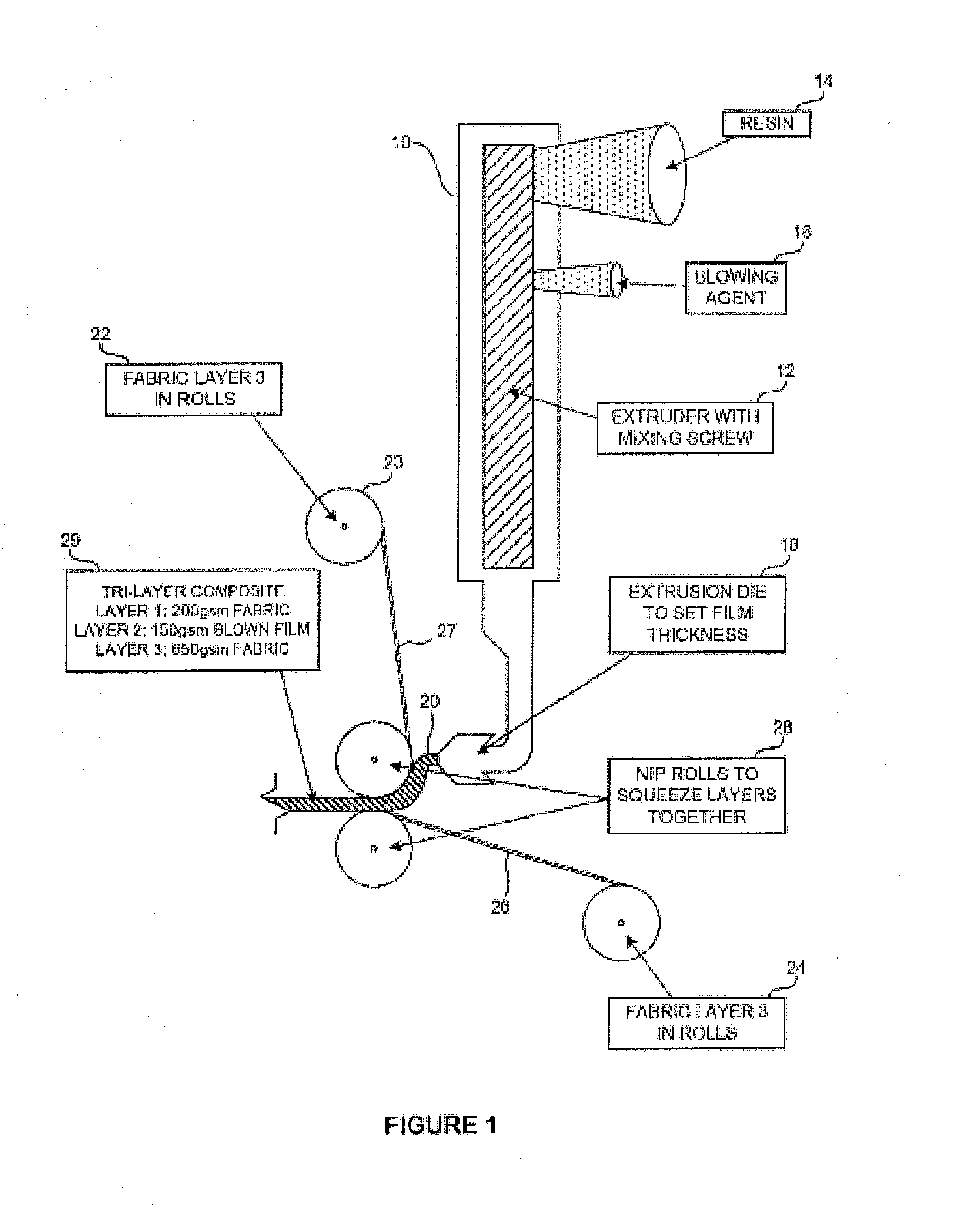High performance moldable composite
- Summary
- Abstract
- Description
- Claims
- Application Information
AI Technical Summary
Benefits of technology
Problems solved by technology
Method used
Image
Examples
example 1
[0066]In the first example, GA24, the following was used:
[0067]Layer 1: 200 gsm 70% Type P110 6d Black Polyester / 30% Black 4 denier PETG.
[0068]Layer 2: 150 gsm Blown HDPE film with 1.0% Techmer Blowing agent.
[0069]Layer 3: 650 gsm 70% Type P110 6d Black Polyester / 30% Black 4 denier PETG
[0070]Total weight 1,000 gsm
[0071]The Extrusion temperature was 210° C. to achieve full blowing potential. The products were molded using a 210° C. oven to preheat the composite assuring that the 165° C. melt point of the PETG fiber was achieved.
[0072]The result was a very stiff molded part with excellent flexural modulus.
[0073]The molded composite was tested for RAYLS and found to be very high with little porosity, but with some porosity. It was then subjected to Acoustic testing with excellent results.
[0074]The molded composite withstood long term heat and environmental aging.
example 2
[0075]In the second example, GA25 the following was used:
[0076]Layer 1: 200 gsm 70% Type P110 6d Black Polyester / 30% Black 4 denier PETG
[0077]Layer 2: 100 gsm Blown HDPE film with 1.0% Techmer Blowing agent
[0078]Layer 3: 700 gsm 70% Type P110 6d Black Polyester / 30% Black 4 denier PETG
[0079]Total weight 1,000 gsm.
[0080]The Extrusion temperature was 210° C. to achieve full blowing potential. The products were molded using a 210° C. oven to preheat the composite assuring that the 165° C. melt point of the PETG fiber was achieved.
[0081]The result was a very stiff molded part with excellent flexural modulus.
[0082]The molded composite was tested for RAYLS and found to be very high with little porosity, but better than GA24. It was then subjected to Acoustic testing with excellent results.
[0083]The molded composite withstood long term heat and environmental aging.
[0084]It was determined that the composites could be made with other blends of Polyester, Polypropylene, Nylon, Cotton, or other...
PUM
| Property | Measurement | Unit |
|---|---|---|
| Temperature | aaaaa | aaaaa |
| Length | aaaaa | aaaaa |
| Length | aaaaa | aaaaa |
Abstract
Description
Claims
Application Information
 Login to View More
Login to View More - R&D
- Intellectual Property
- Life Sciences
- Materials
- Tech Scout
- Unparalleled Data Quality
- Higher Quality Content
- 60% Fewer Hallucinations
Browse by: Latest US Patents, China's latest patents, Technical Efficacy Thesaurus, Application Domain, Technology Topic, Popular Technical Reports.
© 2025 PatSnap. All rights reserved.Legal|Privacy policy|Modern Slavery Act Transparency Statement|Sitemap|About US| Contact US: help@patsnap.com



